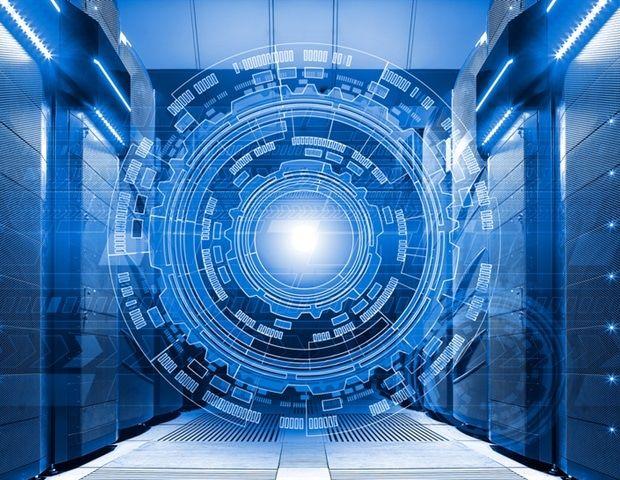AI-Powered Smart Jacket: A Breakthrough in Personalized Temperature Control
3 Sources
3 Sources
[1]
New AI-driven smart jacket could keep you warm without overheating
Researchers have developed a new artificial intelligence (AI)-driven smart textile that automatically adjusts heating and cooling for maximum user comfort. Dubbed 'smart jacket', the garment comes equipped with environmental sensors, heat-generating and color-changing yarns to prevent potentially harmful outcomes like hyperthermia or burns. Electronic textiles are regularly employed as heating pads and electric blankets to keep wearers warm and help ease aches and pains. However, prolonged use can result in heat-related issues.
[2]
Jacket uses AI to keep you comfortable
Electronic textiles, such as heating pads and electric blankets, can keep the wearer warm and help ease aches and pains. However, prolonged use of these devices could possibly cause heat-related illnesses, including hyperthermia or burns. Recently, a group of researchers designed and tested a "smart" jacket equipped with environmental sensors, heat-generating and color-changing yarns, and artificial intelligence (AI) to control temperature and prevent overheating. Their results are published in ACS Applied Materials & Interfaces. Some electronic textiles, or e-textiles, have sensors that can monitor the wearer's heart rate, blood pressure and movement, or can connect via Bluetooth to mobile apps that control temperature. Yet, even with technological advances, users can still be injured by these products. Older people are especially prone to heat-related injuries because of decreased heat sensitivity, and residents of nursing homes and assisted living communities are vulnerable because their temperatures cannot always be easily or frequently monitored by healthcare providers. Jeanne Tan and collaborators believed they could improve e-textile safety by combining AI-driven systems with thermochromic yarn to create a fabric that warms the user without overheating and provides immediate temperature readings for easy monitoring. The researchers created an intelligent heating jacket from their new e-textile containing heat-generating, silver-coated yarn and two types of thermochromic yarn. The silver-coated yarn warms the garment with less bulk and more flexibility than traditionally used carbon fiber. The AI-based temperature control system incorporated into the jacket was trained on 50 subjects with a range of ages, genders and body types who identified their ideal heat settings in environments with varying temperatures, humidities and wind speeds. The color-changing yarns added a safety feature to the jacket, with one yarn transitioning from purple to pink to indicate a heating temperature above 86 degrees Fahrenheit (30 degrees Celsius) to allow for easy temperature monitoring during the day. In dark environments, the other, polymeric optical fiber yarn gave off a blue, yellow or red glow to indicate temperatures of 86 F (30 C), 104 F (40 C) and 122 F (50 C), respectively. In a demonstration, the thermochromic and optical fiber yarns in the jacket accurately indicated heating temperature, and the jacket's AI component predicted a comfortable temperature and provided consistent heating for the wearer, even when the environment changed. In the future, the team says their e-textile technology could be used in various applications, from heated car seats and furniture to spacesuits.
[3]
Jacket uses AI to keep you comfortable | Newswise
Researchers created an AI-enabled jacket from an electronic textile to deliver optimal heating to the wearer, and color-changing yarns signaled temperatures below 86 Fahrenheit (30 Celsius) and above 104 F (40 C). Electronic textiles, such as heating pads and electric blankets, can keep the wearer warm and help ease aches and pains. However, prolonged use of these devices could cause heat-related illnesses, including hyperthermia or burns. Recently, a group of researchers designed and tested a "smart" jacket equipped with environmental sensors, heat-generating and color-changing yarns, and artificial intelligence (AI) to control temperature and prevent overheating. Their results are published in ACS Applied Materials & Interfaces. Some electronic textiles, or e-textiles, have sensors that can monitor the wearer's heart rate, blood pressure and movement, or can connect via Bluetooth to mobile apps that control temperature. Yet, even with technological advances, users can still be injured by these products. Older people are especially prone to heat-related injuries because of decreased heat sensitivity, and residents of nursing homes and assisted living communities are vulnerable because their temperatures cannot always be easily or frequently monitored by healthcare providers. Jeanne Tan and collaborators believed they could improve e-textile safety by combining AI-driven systems with thermochromic yarn to create a fabric that warms the user without overheating and provides immediate temperature readings for easy monitoring. The researchers created an intelligent heating jacket from their new e-textile containing heat-generating, silver-coated yarn and two types of thermochromic yarn. The silver-coated yarn warms the garment with less bulk and more flexibility than traditionally used carbon fiber. The AI-based temperature control system incorporated into the jacket was trained on 50 subjects with a range of ages, genders and body types who identified their ideal heat settings in environments with varying temperatures, humidities and wind speeds. The color-changing yarns added a safety feature to the jacket, with one yarn transitioning from purple to pink to indicate a heating temperature above 86 degrees Fahrenheit (30 degrees Celsius) to allow for easy temperature monitoring during the day. In dark environments, the other, polymeric optical fiber yarn gave off a blue, yellow or red glow to indicate temperatures of 86 F (30 C), 104 F (40 C) and 122 F (50 C), respectively. In a demonstration, the thermochromic and optical fiber yarns in the jacket accurately indicated heating temperature, and the jacket's AI component predicted a comfortable temperature and provided consistent heating for the wearer, even when the environment changed. In the future, the team says their e-textile technology could be used in various applications, from heated car seats and furniture to spacesuits. The authors acknowledge funding from the Laboratory for Artificial Intelligence in Design under InnoHK Research Clusters, Hong Kong Special Administrative Region. ### The American Chemical Society (ACS) is a nonprofit organization chartered by the U.S. Congress. ACS' mission is to advance the broader chemistry enterprise and its practitioners for the benefit of Earth and all its people. The Society is a global leader in promoting excellence in science education and providing access to chemistry-related information and research through its multiple research solutions, peer-reviewed journals, scientific conferences, e-books and weekly news periodical Chemical & Engineering News. ACS journals are among the most cited, most trusted and most read within the scientific literature; however, ACS itself does not conduct chemical research. As a leader in scientific information solutions, its CAS division partners with global innovators to accelerate breakthroughs by curating, connecting and analyzing the world's scientific knowledge. ACS' main offices are in Washington, D.C., and Columbus, Ohio. Registered journalists can subscribe to the ACS journalist news portal on EurekAlert! to access embargoed and public science press releases. For media inquiries, contact [email protected].
Share
Share
Copy Link
Researchers have developed an AI-driven smart jacket that automatically adjusts heating and cooling for optimal comfort, featuring environmental sensors and color-changing yarns to prevent overheating and provide easy temperature monitoring.

AI-Driven Smart Jacket: A New Era in Wearable Technology
Researchers have developed a groundbreaking AI-powered smart jacket that promises to revolutionize personal temperature control and safety in wearable technology. This innovative garment, equipped with environmental sensors, heat-generating yarns, and color-changing indicators, aims to provide optimal comfort while preventing potential heat-related health risks
1
2
3
.The Problem with Traditional E-Textiles
Electronic textiles, such as heating pads and electric blankets, have long been used to provide warmth and alleviate aches and pains. However, these conventional e-textiles come with inherent risks, particularly for vulnerable populations. Prolonged use can lead to heat-related illnesses, including hyperthermia or burns, especially among older individuals with decreased heat sensitivity
2
3
.AI-Powered Solution for Personalized Comfort
The smart jacket incorporates an AI-based temperature control system trained on data from 50 subjects of varying ages, genders, and body types. This diverse dataset allowed the AI to learn ideal heat settings across different environmental conditions, including temperature, humidity, and wind speed
2
3
.Advanced Materials for Enhanced Performance
The jacket's e-textile composition includes:
- Heat-generating silver-coated yarn, offering improved flexibility and reduced bulk compared to traditional carbon fiber
2
3
. - Two types of thermochromic yarn for visual temperature indication
2
3
.
Related Stories
Innovative Safety Features
The smart jacket boasts unique safety features to prevent overheating:
- Daytime indicator: A yarn that changes from purple to pink when the temperature exceeds 86°F (30°C)
2
3
. - Nighttime indicator: Polymeric optical fiber yarn that glows blue, yellow, or red at 86°F (30°C), 104°F (40°C), and 122°F (50°C), respectively
2
3
.
Successful Demonstration and Future Applications
In a demonstration, the smart jacket accurately indicated heating temperatures and consistently provided comfortable heating, even in changing environments. The researchers envision this e-textile technology being applied to various fields, including:
- Automotive industry (heated car seats)
- Furniture design
- Space exploration (spacesuits)
2
3
This AI-driven smart jacket represents a significant advancement in wearable technology, offering personalized comfort and enhanced safety features that could benefit a wide range of users, from the elderly to space explorers.
References
Summarized by
Navi
[1]
[2]
Related Stories
MIT Develops Fiber Computer for Smart Clothing: A Breakthrough in Wearable Technology
27 Feb 2025•Technology

AI Revolutionizes Building Cooling: New Thermal Coating Promises Significant Energy Savings
03 Jul 2025•Science and Research

Cornell Researchers Develop AI-Powered Smart Clothing for Exercise Tracking
10 Apr 2025•Technology

Recent Highlights
1
Meta acquires Manus for $2 billion, adding revenue-generating AI agents to its platforms
Business and Economy

2
China proposes world's strictest AI chatbot rules to prevent suicide and emotional manipulation
Policy and Regulation

3
Deepfakes cross indistinguishable threshold as voice cloning and video realism surge 900%
Technology





